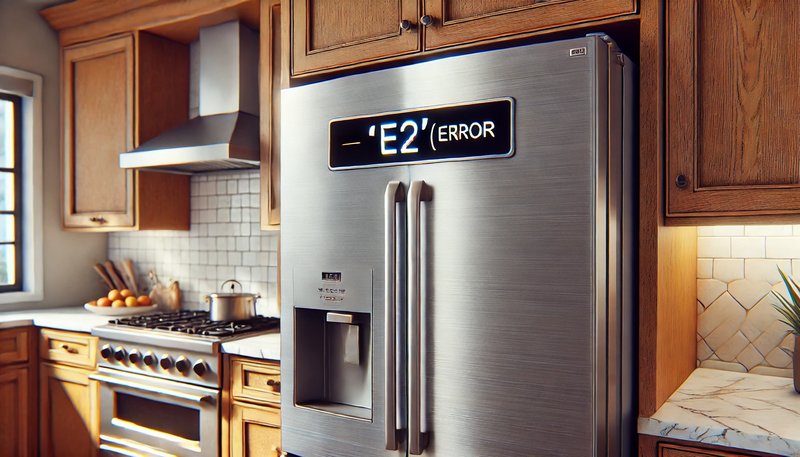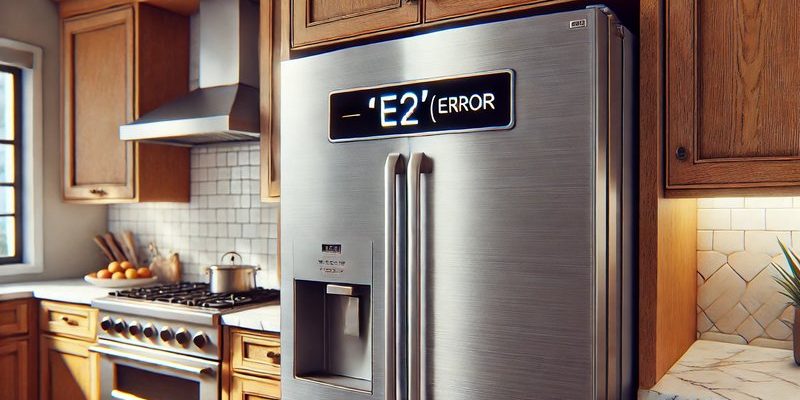
Imagine this: your fridge is like the heart of your kitchen, working tirelessly to keep your food fresh and your drinks chilled. Now, if you’ve ever been in a room where a fan suddenly stopped working, you’ll know things can get uncomfortable fast. The same logic applies to your refrigerator. An OE error code might suggest that the evaporator fan inside your fridge isn’t up to the task, potentially due to obstruction, malfunction, or even failure.
Understanding the OE Error Code
So, what exactly does the OE error code mean for your GE refrigerator? Well, the OE code is essentially your fridge’s way of letting you know that there’s an issue with the evaporator fan motor. This fan plays a crucial role in circulating cool air throughout your fridge. Without it, the cold air can’t move around properly, and that can spell trouble for your perishables.
Think about the evaporator fan as the dude with a leaf blower keeping your fridge’s cold air moving efficiently. If he’s not doing his job, the cold air just sits there, which isn’t ideal for keeping things nice and fresh. Usually, this error code pops up when the fan isn’t spinning at the right speed or has stopped altogether. This can be due to various reasons—from a build-up of ice in the freezer that jams the blades to a faulty motor that needs replacing.
Here’s the deal: your GE refrigerator flashes the OE error code as a warning sign. It’s like when your car’s check engine light comes on—it’s not a disaster just yet, but it’s something you shouldn’t ignore. Addressing it sooner rather than later can save you from spoiled groceries and the costs associated with more extensive repairs down the line.
Common Causes of the OE Error Code
Let’s dive into why your fridge might be throwing this OE error code. There are a few common culprits behind this fan issue, and identifying them is the first step towards a fix. One frequent cause is ice buildup that can block the fan blades. Picture a windmill trying to spin during a snowstorm—it’s a tough gig! If too much frost accumulates, it can bring the fan to a grinding halt.
Another possibility is a faulty motor. Like any other appliance part, the evaporator fan motor can wear out over time. This wear and tear can cause the motor to either slow down or stop working completely, leading the refrigerator to detect the glitch and flash the OE error code. Lastly, wiring problems can also be at play. Loose or damaged wires can interrupt the power supply to the fan, causing the system to flag an error.
So, what can you do about it? Well, first things first—if you suspect ice buildup, try manually defrosting your freezer. A quick thaw might just set things straight. If the problem persists, however, it might be time to peek at the motor and wiring. Keep reading, and I’ll guide you through it step by step.
Steps to Resolve the OE Error Code
Fixing the OE error code may seem a bit daunting at first, but with patience, you can often tackle some of the simpler causes yourself. Here’s a simple process to follow. Start by unplugging your refrigerator—safety first! Then, open up the freezer compartment to check for excessive ice. If you see frost, give defrosting a try. You can do this by leaving the freezer door open for several hours or using a hairdryer to speed up the process.
If defrosting doesn’t do the trick, you’ll need to consider the fan motor. Accessing the motor may require removing the back panel inside the freezer. Take a good look—see if the motor is trying to turn. If it’s struggling or silent, it might need replacing. Don’t be shy about calling in a pro if that’s the case.
Wire issues can be a bit trickier. Check the connections to ensure they’re secure. If you spot any frayed wires, it might be time to consult a technician. Remember, handling electrical components can be risky without proper know-how.
Preventing Future Error Codes
Prevention is always better than cure, right? Once you’ve resolved the OE error, there are a few things you can do to make sure it doesn’t make an unwelcome return. Regular maintenance is key. Keep the freezer clear of ice buildup by doing periodic manual defrosts, especially if you notice frost accumulation.
Also, don’t overload your freezer. A packed freezer can block air vents, leading to temperature issues that affect fan performance. Try organizing contents so air can circulate freely inside. Lastly, every few months, give the appliance a quick check-up. Look out for any unusual noises or operation issues, and keep it clean to ensure efficient performance.
By following these preventative tips, you’ll not only keep the OE error at bay but also extend the life of your refrigerator. A little care goes a long way in keeping your appliance running smoothly, ensuring your food stays fresh, and your ice cream remains perfectly churned, pleasing both your heart and your taste buds!
